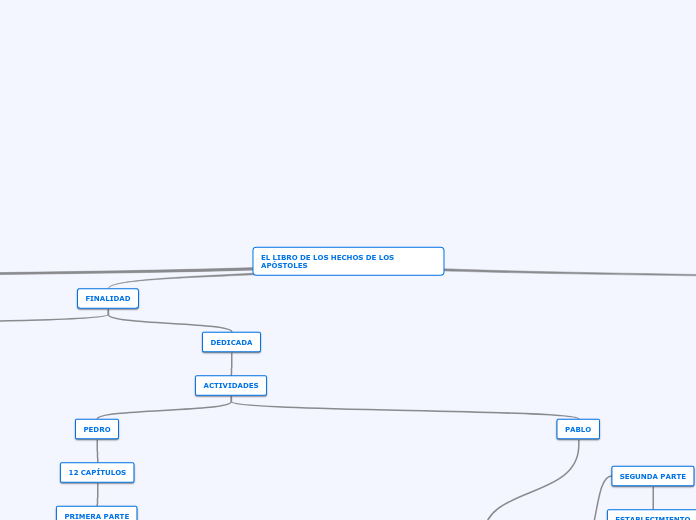Por: Jesús Villadiego Arbeláez
Yves Marie - Congar
To name your story, you have to think about the overall message and what you want your audience to understand from the story. Also, make it relevant and easy to remember.
SUS OBRAS
Creo en el Espíritu Santo
1978
La Iglesia: Desde San Agustín hasta la época moderna.
1970
La eclesiología de la alta edad media
Esta es la Iglesia que amo
1968
3 títulos a la Iglesia
Pueblo mesiánico
Sacramento universal de salvación
Pueblo de Dios y cuerpo de Cristo
El episcopado y la Iglesia Universal
1962
La Tradición y las tradiciones: Ensayo histórico
APORTES
Conexión entre la historia y la verdad
La historia es un elemento imprescindible en la eclesiología.
La Iglesia como unidad
Sino como ecumenismo
No ideada como unionismo
La Iglesia desde la perspectiva de comunión
Cuerpo místico de Cristo
La Iglesia como pueblo de Dios
El concilio y los concilios
1960
Jalones para una teología del laicado
1954
Verdadera y falsa reforma en la Iglesia
1948
Esbozos del misterio de la Iglesia
1947
Cristianos desunidos
1937
UNIDAD DE LA IGLESIA
Subtopic
Iglesia desde los hombres (Ecclesia ex hominibus)
La Iglesia de Cristo (Ecclesia in Cristo)
La Iglesia de la Trinidad (Ecclesia de Trinitate)
APORTES EN EL CONCILIO VATICANO II
Laico
Misión del laico
Consagración del mundo
Realidades temporales en el plan de Salvación.
Función del ministro
Servicio
Dimensión trinitaria
Dimensión humana
Se conoce a Jesucristo y al Dios revelado por Él.
Divinidad
Humana
Esfera cristológica
Jesucristo facilita la transición de la Iglesia a los hombres.
Solo por Cristo es posible llegar a Dios.
Sólo a través de Cristo se puede entregar la vida a la Iglesia.
La vida que se encuentra en el Padre y se comunica
La Santa Iglesia
Los ángeles
La Santísima Trinidad
Documentos conciliares
Presbyteroum ordinis
Dignitatis humanae
Ad gentes
Unitatis redintegratio
Dei Verbum
2° capítulo
Magisterio eclesial
Sagrada tradición
Lumen Gentium
2 primeros capítulos
Iglesia pueblo de Dios
Misterio de la Iglesia
Libertad religiosa
Colegialidad episcopal
Ecumenismo
CONCILIO VATICANO II
The ending of a story is essential. We all know that if the ending is weak, what happened before loses its importance. So make it unpredictable, but fair. A resolved ending answers all the questions and ties up any loose threads from the plot.
4° Sesión
Relación de la Iglesia con el mundo
Santo Evangelio
Jesucristo
3° Sesión
Orientalium Ecclesiarum
Sobre las Iglesias orientales
Decreto Unitatis redintegratio
Sobre el ecumenismo
Constitución dogmática Lumen Gentium
Sobre la naturaleza de la Iglesia
2° Sesión
4 ejes temáticos
Interrelación religiosa
Disciplina eclesiástica
Renovación moral
Desarrollo de la fe
1° Sesión
Relación entre
Sagrada Tradición Apostólica
Sagrada Escritura
Renovación eclesial
This is the closure section of the story.
See examples of possible outcomes below:
- all problems have been solved
- it's clear how each one of your characters ends up
- your main character is transformed by the challenge
No puede existir sin Ecumenismo y Diálogo interreligioso.
Try answering these questions in order for you to come up with a closure:
- Have all problems been solved?
- Is it clear what happens with all your characters in the story?
- Has the challenged transformed your main character?
- How do the characters feel in the end?
Donde la Iglesia se definió a si misma
This is the moment when the main character surpasses the last obstacle and finally faces their greatest challenge.
The climax usually follows one of these patterns:
- realization
- resolution
- choice
Type in your answer.
ECUMENISMO
The middle of the story is where you add layers of complications that will lead to the end. Reveal more about the character's journey. Did their personality go through changes? How did they overcome the challenges? And as you build up the story’s central conflict, make it more personal to that character. Also, from the middle act, you have to lead into the final act.
Unidad de la Santa Iglesia
There wouldn't be any tension and excitement in your story if there weren't any obstacles in your character's way.
Anglicanos
Ortodoxos
Protestantes
ESPÍRITU SANTO EN LA ECONOMÍA
In the beginning of the story (or the exposition), you will need to introduce the setting and characters. You might also want to introduce the main conflict. This part of the story is important because it gives the reader necessary background information and maybe even a first insight into a character’s personality.
Creo en el Espíritu Santo (tres partes)
The setting (time & place) of a story can change throughout the plot.
Comunicador de dones y carismas
Sensory details include sight, sound, touch, smell, and taste. These details are important because they create depth in your setting.
See a few examples below:
- the smell of fresh bread
- the scent of freshly cut grass
- rain falling onto the windshield etc.
El Divino Paráclito
Procede
Tradiciones
Occidental
Oriental
Revelación
Eclesiología
Pneumatología
Espíritu Santo como vida
The time of the story can also change. It can describe the event of a single day or can include an entire year's plot. Anyway, don't forget to mention it.
Acción en la vida personal Oración
Renovación del Espíritu
Positivo y negativo de la Renovación Católica Carismática
Revelación progresiva
Your story can take place wherever your imagination will take you to.
For example: in an elevator, in an enchanted forest, etc. Don't forget to give details of the environment each time the setting changes, otherwise, the story can be confusing. Also, mention the seasons as each of them has unique weather and events.
Espíritu Santo lazo de amor
Hijo
Padre
Distingue Relaciones
Une Naturaleza
A través de la Escritura
Obra Preconcilio El divino desconocido
Characters are essential to a good story. Usually, the protagonist(s) is/are the most affected by the plot. Introduce a character by focusing on their actions, interests, and occupation, as the physical appearance doesn't make a difference in most cases.










